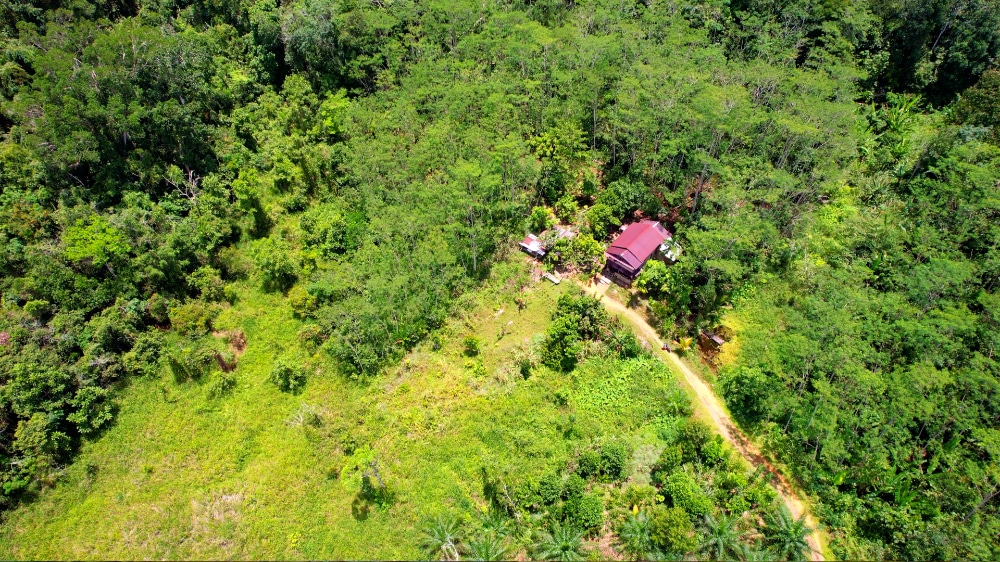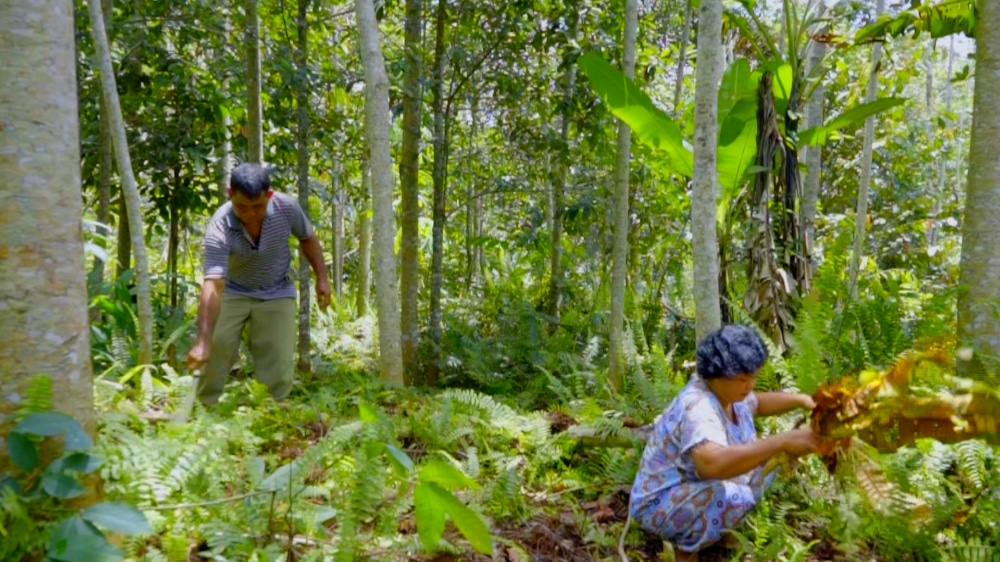
If you take an adventurous drive of several hours from Palangka Raya, the capital of Central Kalimantan, into the heart of Borneo, you will eventually come across a truly special house on the side of a narrow country road near the village of Jalemu Raya. Far from supermarkets or malls, and far from the traffic and hustle and bustle of the city, Herpit, an Indonesian smallholder, lives here with his wife in the middle of their plot of Sengon trees. Talking to the two of them, you immediately sense that the people residing here are even more remarkable than their accommodation.

“In the past,” Herpit says, “I mainly grew rubber and vegetables to make a living for myself and my family.” Then, in 2015, he heard about the 100 Million Trees project, which back then was called 1 Million Trees. His curiosity left him no choice, so he started planting sengon seedlings in his field for the first time.
In his community, the program has since created a sense of change and progress, Herpit notes. And that is also to his credit. Because he was one of the earliest participants in the project and is held in high esteem in the village, Herpit is seen as a point of reference for many other smallholders who have been inspired by his pioneering work and are now cultivating fast-growing timber species themselves.

“Keeping up the enthusiasm”
Herpit’s field is a prime example of the impressive speed with which sengon trees grow in Borneo’s tropical climate. Seven years after planting the first seedlings, Herpit’s plot has transformed into a small sengon forest. But that’s not the only special thing about this place. In order to take even better care of his trees, the small farmer built his home in the middle of the trees.
“I built our house right here in the sengon garden because my wife and I wanted to take care of the plants ourselves. I also wanted to grow more intercrops,” Herpit explains. He takes advantage of agroforestry, where trees and crops stand side by side in the same field. Herpit cultivates a variety of vegetables that he can sell at market to generate additional income.

Even after seven years of growing sengon, Herpit and his wife remain curious and attentive. “Sometimes we discover harmful fungi or diseases, and don’t know how to fix that right away,” Herpit says. That’s when the Fairventures field facilitators come in and give directions on how to deal with these issues, for example by mowing the grass or improving sanitation and maintenance around the trees.
Herpit and his wife want to continue growing sengon. The curiosity that led the smallholder to join the project seven years ago now ensures that he wants to learn more and more about the lightwoods. “My hope for the future is that we remain enthusiastic, and that the project continues to help spur positive change in the region.” Herpit will, of course, be keeping a close eye on the development of his own field. After all, all he has to do for that is look out the window.
You are currently viewing a placeholder content from YouTube. To access the actual content, click the button below. Please note that doing so will share data with third-party providers.
More Information